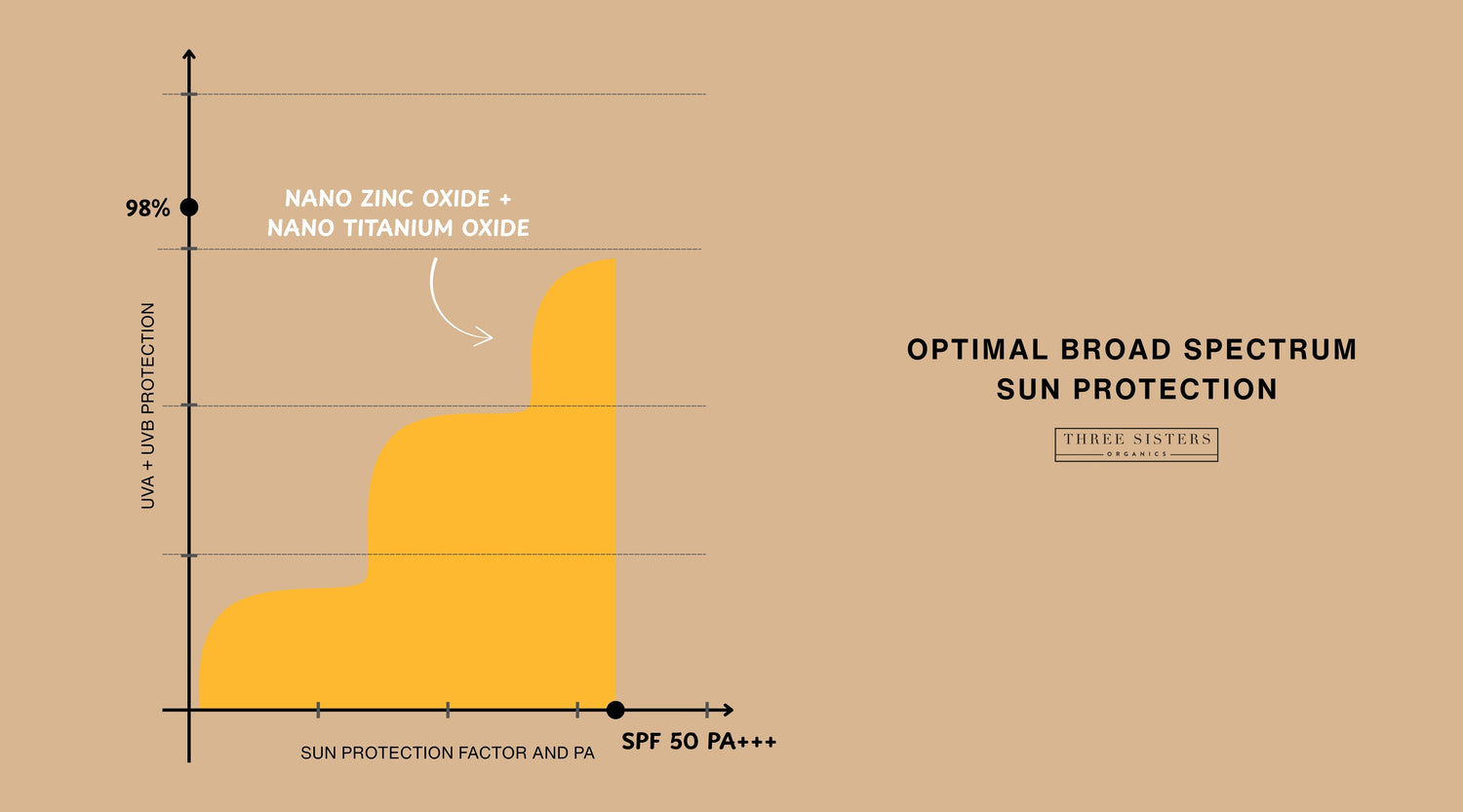What Sun Exposure Does to Your Skin
Sun exposure is the leading cause of premature aging and is responsible for nearly 80% of visible skin damage. UV radiation, specifically UVA and UVB rays, breaks down collagen, causes hyperpigmentation, and increases the risk of skin cancer.
UVA rays penetrate deep into the skin, leading to wrinkles, sagging, and photoaging.
UVB rays damage the skin's surface, causing sunburn and direct DNA damage.
Even blue light from screens can harm your skin by producing free radicals, which accelerate aging. Whether you're indoors or outdoors, daily sun protection is essential.

Understanding SPF Ratings and Broad-Spectrum Protection
SPF, or Sun Protection Factor, indicates how well sunscreen protects against UVB rays. For example, SPF 15 blocks about 93% of UVB rays, SPF 30 blocks around 97%, SPF 50 blocks approximately 98%, and SPF 100 blocks about 99%. As the SPF number increases, more UVB rays are blocked.
While SPF 50 may seem only slightly stronger than SPF 30, it allows half as much UVB radiation to reach the skin, providing significantly better protection against sunburn and long-term sun damage.
To protect against UVA rays, check the PA rating, commonly used in Asian and European sunscreen formulas:
PA+ = Some UVA protection
PA++ = Moderate protection
PA+++ = High protection
PA++++ = Very high protection
For most skin types and everyday wear, SPF 50 PA+++ provides excellent broad spectrum sun protection, defending against both UVA aging and UVB burning rays.
How to Choose the Best Sunscreen and Use It Effectively
When it comes to selecting the right sunscreen, there’s more to it than just the SPF number on the label. Protecting your skin effectively means knowing what to look for and how to apply it. Here’s your ultimate guide to getting the sun protection you deserve:
Choose Mineral-Based Sunscreen
Mineral sunscreens, featuring active ingredients like zinc oxide and titanium dioxide, are your skin’s best friends. Here’s why they shine:
Gentle on Sensitive Skin: Perfect for those with acne-prone or sensitive skin types, these formulas are less likely to cause irritation.
Instant Protection: Unlike some chemical sunscreens, mineral options start working immediately after application.
Plus, with advancements like nano zinc oxide and nano titanium dioxide, you can enjoy robust protection with a smooth finish—no more ghostly white cast, making them ideal for all skin tones!
Master the Art of Application and Reapplication
Even the best sunscreen can lose its potency if not applied correctly! Keep your skin safeguarded with these essential tips:
Apply Generously: Make sure to slather on a sufficient amount 15 minutes before sun exposure to ensure full effectiveness.
Reapply Regularly: To maintain that shield, reapply every two hours—especially after swimming, sweating, or a quick face wipe.
Easy Touch-Ups: For on-the-go convenience, use SPF mists or sprays that can be applied over makeup, keeping your skin protected and looking fresh throughout the day.

The SPF Skincare Routine Your Skin Will Thank You For
A well-formulated sunscreen is the most effective anti-aging product you can use daily. By understanding SPF ratings and PA levels, as well as choosing broad-spectrum sunscreens with mineral actives, you provide your skin with the best defense against premature aging and sun damage. For reliable daily protection, a mineral-based sunscreen with SPF 50 PA+++ is widely recommended by skincare professionals. It offers optimal UVA and UVB protection, ensuring healthy, radiant skin all year round.
Frequently Asked Questions
Q: Is SPF 50 enough for daily use?
Yes, SPF 50 PA+++ is ideal for daily protection, offering high defence against both UVA and UVB rays.
Q: Do I need sunscreen indoors?
Absolutely. UVA rays and blue light from windows and screens still reach your skin indoors.
Q: Can people with darker skin skip sunscreen?
No. Everyone, regardless of skin tone, should wear SPF to prevent aging, dark spots, and long-term sun damage.
References
-
FDA: Sunscreen: How to Help Protect Your Skin from the Sun
- National Institutes of Health, National Library of Medicines


Leave a comment
This site is protected by hCaptcha and the hCaptcha Privacy Policy and Terms of Service apply.